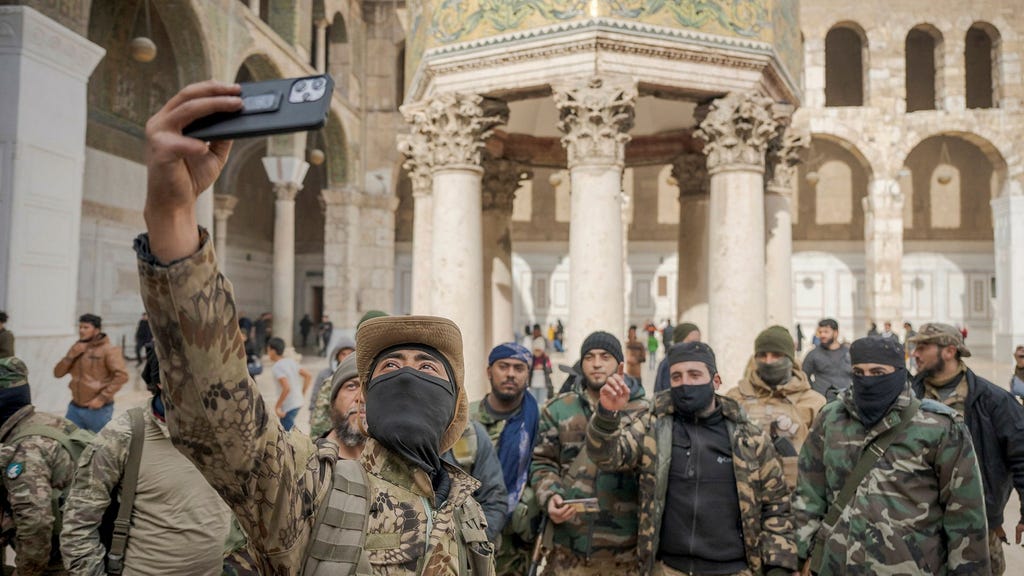The bustling streets of Damascus, recently liberated from the Assad regime, are a scene of contrasting emotions. The air, thick with the smell of diesel and uncollected garbage, testifies to the city’s recent turmoil. Citizens sweep the sidewalks, a symbolic gesture of cleansing and renewal, yet overflowing bins serve as a stark reminder of the lingering effects of conflict. Amidst the debris, a rebellious artwork emerges: Bashar al-Assad’s portrait, perched atop a mound of trash, is defaced with a defiant act of spitting. The atmosphere is charged, a mix of jubilation and apprehension. People explore abandoned government buildings, bask in the December sun, and capture selfies with toppled statues of the former dictator. Rebel fighters, now responsible for directing traffic, celebrate their victory with scoops of traditional Syrian ice cream.
The fall of the Assad regime on December 8, 2024, was unexpected, leaving many analysts scrambling to predict the future. Comparisons are drawn to other uprisings in the Middle East, evoking the ghosts of Gaddafi and Saddam Hussein. This uncertainty breeds both hope and fear. Tarek, a teacher who joined the rebel movement HTS, dreams of returning to his students. Jamil, a flag vendor, envisions a future with a family, optimistically proclaiming his desire for four wives. However, this euphoria is not universally shared. Female students, Amal and Almaz, express their anxieties, sensing a palpable tension beneath the surface celebrations. Despite their joy at Assad’s downfall, an undercurrent of fear persists, a lingering uncertainty about what the future holds.
Berah, a shop owner preparing a celebratory parade for former political prisoners, dismisses the pessimistic outlook of some media outlets, emphasizing the people’s resilience and determination to avoid a repeat of the past. Joelle, a Christian observing the scene with her family, shares a similar apprehension, feeling uneasy about the Israeli bombings targeting Syrian weapon depots. Even amidst the festivities at the historic Ummayad Mosque, where families and rebel soldiers mingle, a sense of caution prevails. Moughira, a masked rebel soldier from Aleppo, expresses both joy and residual fear, accustomed to concealing his identity throughout the revolution.
The mosque courtyard, teeming with children posing for pictures with the rebels and their weapons, becomes a poignant symbol of the war’s impact on the youngest generation. Ruba, a mother whose husband died shortly after being released from prison, shares her grief, highlighting the devastating human toll of the conflict. Across the city, portraits of Assad are defaced, shop shutters bearing the regime’s colors are repainted white, and the remnants of the old order are systematically erased. Yet, beneath the surface of this transformation, anxieties remain. Young artists, Luna Ibrahim and Hayan Batoun, while acknowledging the rebels’ current politeness, express their concerns about the future, fearing the imposition of an Islamist state.
The fragility of the situation is further underscored by the dysfunctional infrastructure, the long bread lines, and the rumors of the regime emptying the national bank before fleeing. Hayan, whose theater school remains closed, worries about his interrupted education and uncertain prospects. Amidst this uncertainty, the plight of displaced families like Lianna’s becomes even more desperate. Trapped in a shipping container near the Lebanese border, unable to cross and fearful of returning, they represent the countless Syrians caught in limbo, their future hanging in the balance.
The fall of Assad has ushered in a new chapter for Syria, but the path ahead is fraught with challenges. The scenes in Damascus paint a vivid picture of a nation grappling with a complex mix of emotions – relief, hope, fear, and uncertainty. The scars of war run deep, and the transition to a new order is precarious. The stories of individuals like Tarek, Jamil, Amal, Berah, Joelle, Moughira, Ruba, Luna, Hayan, and Lianna illustrate the diverse experiences and perspectives shaping the future of Syria, a future still being written amidst the rubble and the lingering scent of diesel and decay.














